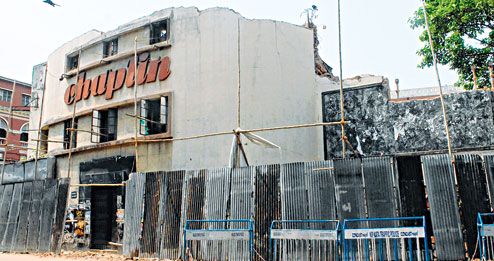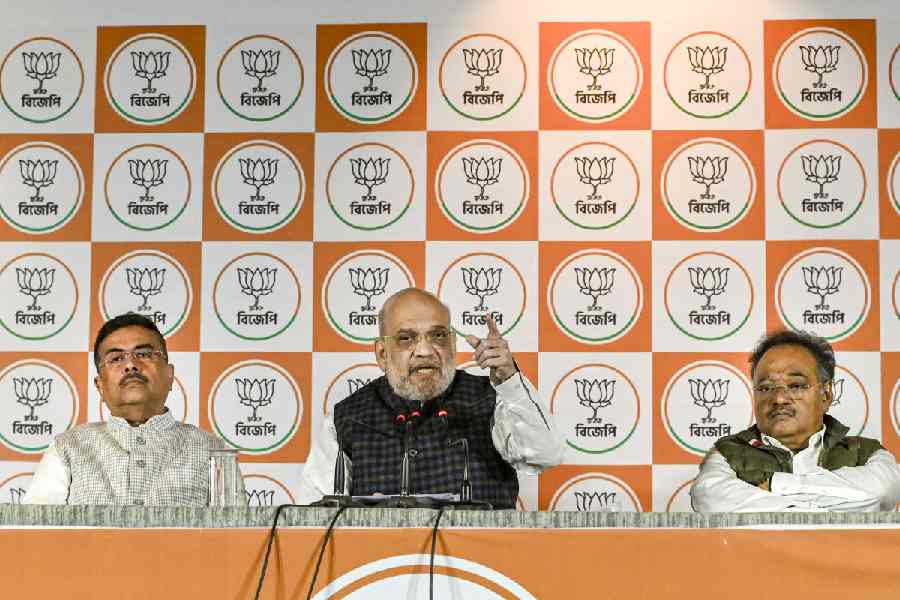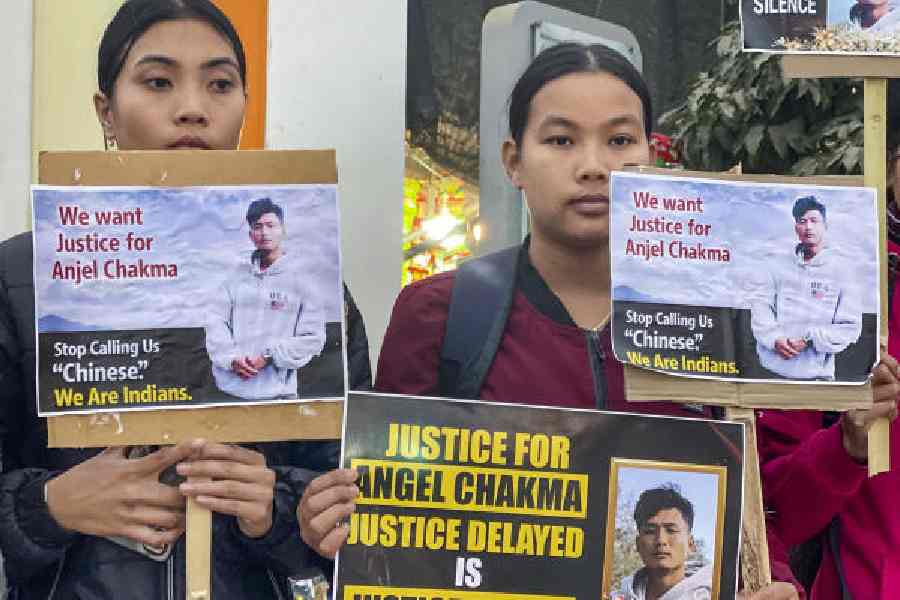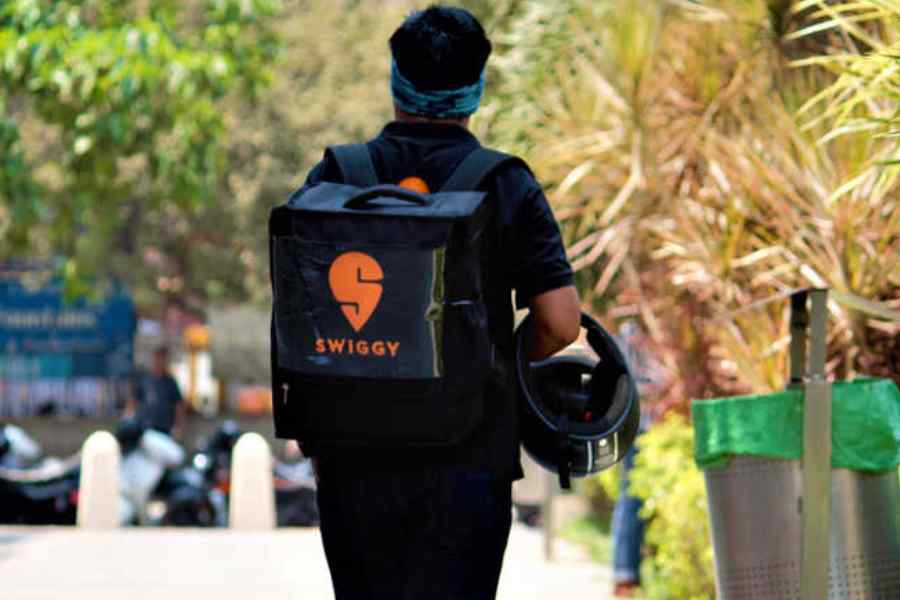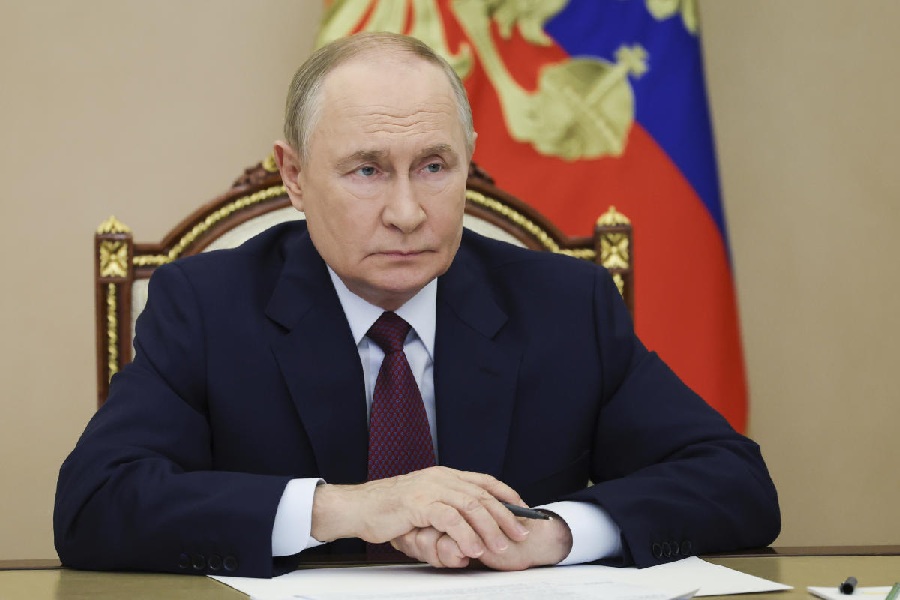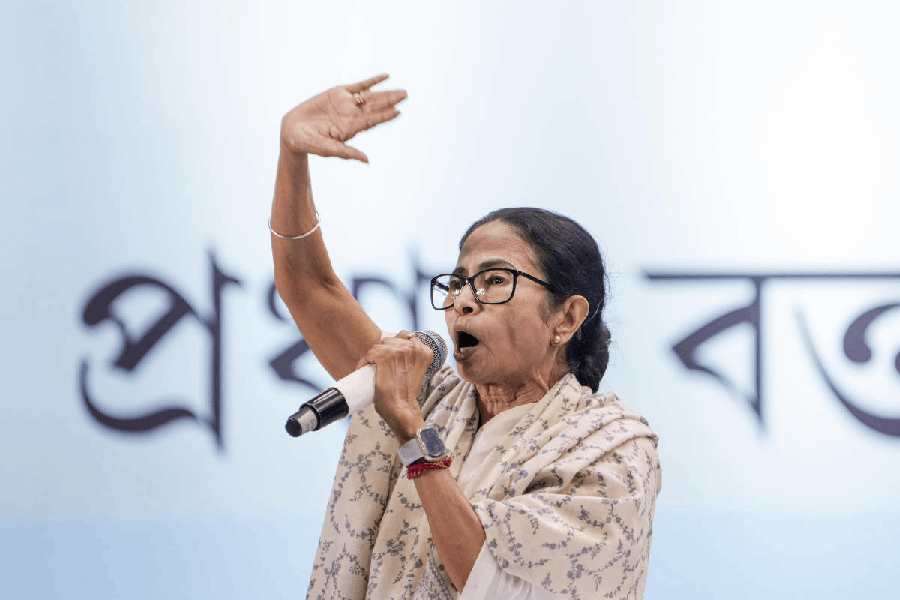 |
| Chaplin being demolished on Saturday. Picture by Sanjoy Chattopadhyaya |
Jamshedji Framji Madan, the theatre and cinema magnate after whom a street in central Calcutta is named, was the first one in this country to launch a bioscope show in a tent on the Maidan. He also opened Elphinstone Picture Palace here on Hogg Street opposite the Calcutta Municipal Corporation building in 1907.
It was the first of his chain of cinemas and the first permanent movie theatre in this city. The Palace later was renamed Minerva, a small theatre where good Hollywood films were screened, although later it became notorious as a rodent-infested hall which often forced people to put their feet up.
 |
| Kalachand Darbesh performs at Sahajiya Utsav at Rabindra Sadan |
Much later it was renamed Chaplin. It was under the Calcutta Municipal Corporation. And now Calcutta’s oldest cinema meets the fate of many other theatres which have been wiped out from the city map. It is being demolished. It had been closed for quite some time and soon it will be gone forever.
Evergreen music
The music of the marginalised, such as Darbeshi music, will survive no matter what, because it has deep roots. The fact that it is not institutionalised allows it to connect better with the feelings of everyman, said film-maker Goutam Ghose at the launch of Sahajiya Utsav at Rabindra Sadan on April 19. With him on the dais were film-maker Raja Sen, writer Nabaneeta Dev Sen, actor Ashish Vidyarthi and Bhoomi singer Soumitra Ray.
Dev Sen said there was no need to brand Kalachand Darbesh, the main attraction, as the “last” Darbesh as there is bound to be more who will, or already are, following his footsteps.
The evening began with a screening of a documentary, In Search of Darbeshi Songs, by Deb Chowdhury, which was made available online simultaneously. The film, made over six years, documents Kalachands spiritual and musical quest.
Kalachand was the headmaster of Dhupguri Junior High School till 1981, when he chose the life of a Darbesh, living on alms collected by singing in trains.
The singer has since performed across the world and with the biggest of names but there has been little change in his economic status. In the film, his wife speaks of financial difficulties in the absence of government help. Their son refuses to accept the life of hardship.
The efforts of the Sahajiya foundation, which organised the programme, are therefore commendable. It is not only developing support schemes for folk masters but is also engaged in research and archiving of folk musical heritage.
The programme closed with an enthralling performance by Kalachand and his disciples.
 |
| Actress Moon Moon Sen at the inauguration of a painting and sculpture exhibition — The Strokes of Peace and Unity — at The Palladian Lounge, The Bengal Chamber of Commerce and Industry, on April 25. Picture by Sanat Kumar Sinha |
Tribute to Pancham
Ace flautist Pandit Ronu Majumdar was the star performer at O Saathi Chal, a musical evening dedicated to Rahul Dev Burman at GD Birla Sabhagar on April 21.
 |
| Pandit Ronu Majumdar |
Majumdar’s association with Pancham began in the 1980s and he recorded several gems for the composer like Saaton bar bole bansi (Dil Padosi Hai album), Khali haat sham aayi hai (Ijaazat), Kuch na kaho and Pyar hua chupke se (1942 A Love Story).
Majumdar belongs to the Maihar gharana and received training from Lakshman Prasad Jaipurwale, Vijay Raghav Rao as well as Ravi Shankar. He bagged a Grammy nomination for the album Tabula Rasa (1996).
“I am touched by the warm response from Panchamda’s fans,” said the maestro. Also part of the event were Nitin Shankar (percussion), Kishore Sodha (trumpet), Bhanu Gupta (harmonica), Manish Kulkarni (bass guitar), Suresh Yadav (saxophone and English flute), besides Rocket Mondal (rhythm guitar) and his troupe. The event was organised by Melody Chime.
(Contributed by Soumitra Das and Sebanti Sarkar)

